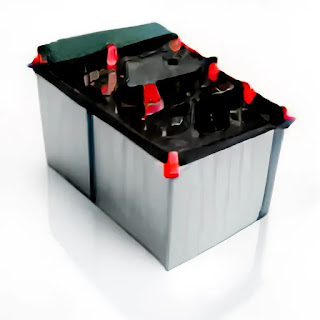As per the classification, automobile batteries include lithium-ion and lithium-metal batteries, the most dangerous hazardous materials.
Automotive batteries must be disposed of according to the correct procedures under regulations governing the disposal of hazardous waste because they fall under Class 9: Miscellaneous Hazardous Materials.
Many batteries contain corrosive or poisonous chemicals that could harm workers if they come into contact with their skin. If these batteries are overcharged or experience a short circuit, they are more likely to explode.
Automotive batteries are frequently among the most hazardous substances regarding the potential for harm, but there are some notable exceptions. Class 9 batteries include lithium-ion and lithium-metal batteries that are frequently used today. Therefore, they must be disposed of in accordance with the regulations governing the disposal of hazardous waste. If you are still determining which category your battery falls under, you can speak with the safety department in your community to learn how to dispose of it properly.
What does the phrase "Various Dangerous Materials" actually mean?
A substance is deemed a miscellaneous hazardous material if it also has anesthetics, toxic properties, and other qualities that could potentially result in serious harm or excruciating agony, especially when transported.
Some other categories of potentially dangerous materials include the following:
Battery-powered device
There are lighters and spray cans too.
Corrosives.
Dry ice
It's crucial to remember that Hazardous Material shouldn't ever come in contact with the body directly. At all costs, avoid doing this.
Because of this, it is advised that before being carried, each battery be put into a separate, carefully wrapped, and identifiable container and that any exposed terminals be covered.
In addition, the batteries need to be put in plastic containers with labels identifying the contents' components (materials and type of battery).
When getting rid of old batteries, follow the same procedure, or even better, take them to a nearby auto parts store so they can be recycled there.
Why is the battery dangerous?
They are risky because they include hazardous components like sulfuric acid, mercury, nickel, cadmium, and lead, in addition to other risky components that can give batteries a range of risky properties. Batteries are dangerous because of this. When used, these potentially harmful substances also carry a risk of fire or explosion.
On the EPA and DOT websites, you can find regulations relating to lead-acid batteries. They are not listed as hazardous waste, on the other hand. On the product information page, they are described as non-spillable lead-acid batteries. The same rules that apply to wet batteries are also applied to these other types of batteries by the EPA and DOT. Additionally, they are not required to use ground or air transportation.
You are responsible for ensuring that a lead-acid battery is packaged properly when moving it. If you have multiple batteries, ensure they are all individually wrapped and protected before using them. If the battery terminals are visible, separate covers must be used. The transportation of used lead-acid batteries is also subject to rules established separately by the EPA and the DOT. When transporting used car batteries, you must put them in a box or other packaging that is strong enough to protect the battery from deterioration.
Ensure each battery is packaged in its unique container when transporting automotive batteries. You are in charge of ensuring that the terminals are kept apart from one another and are not a
When exporting lead-acid batteries, you must adhere to the regulations set forth by the DOT. It would help if you packaged each separately, ensuring the terminals are protected. However, the battery should be shielded from harm and clearly labeled before being placed inside durable packaging. A description of the material and the kind of battery should be included on the labels. In addition, you need to attach a warning label to the lead acid battery because it poses a risk.
The DOT and the EPA have specific standards in place for lead-acid batteries. You must ensure that a lead acid battery is packed in plastic before sending it. Leaking out is forbidden by the DOT. The packaging must be hermetically sealed at all times. Additionally, you ought to label the terminals using a unique cover. The batteries are considered hazardous materials as long as the EPA and DOT regulations are followed.

Comments
Post a Comment